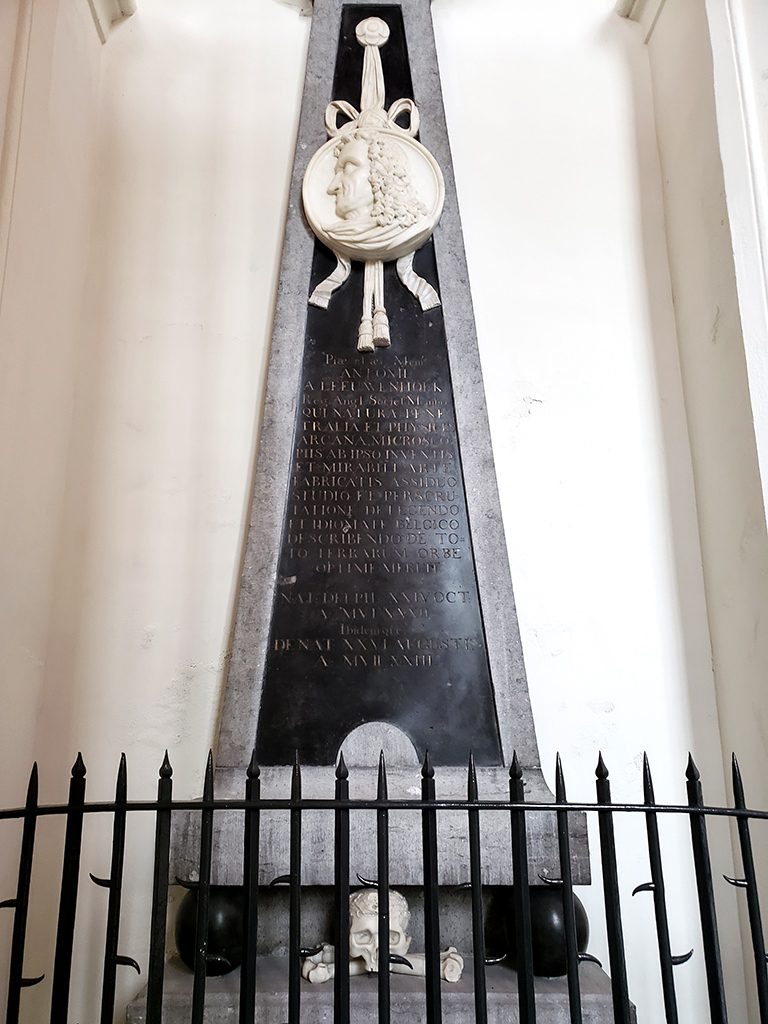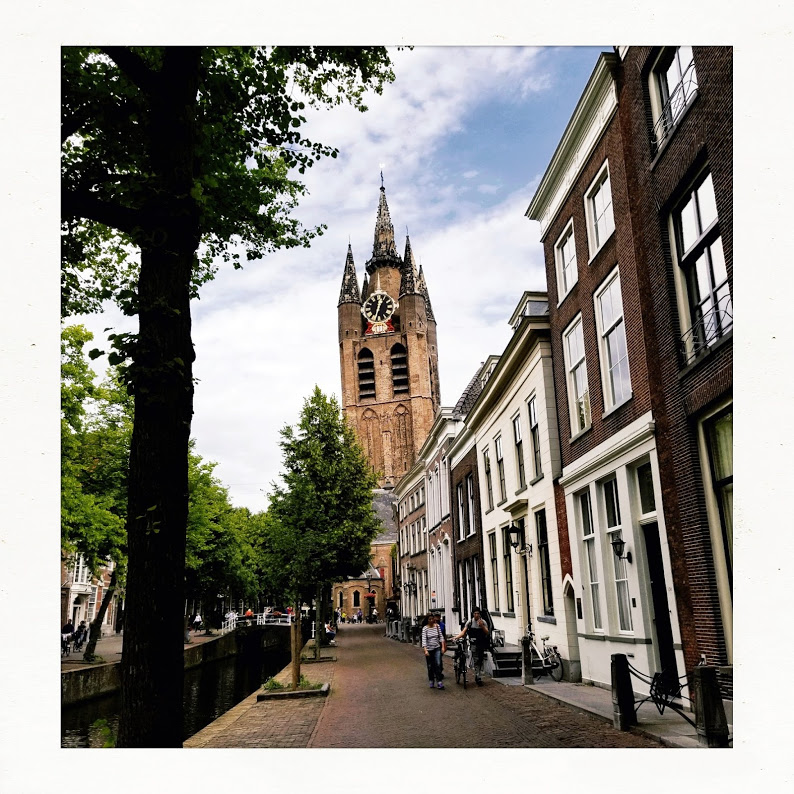
Delft is home to two major churches commonly referred to as the Oude Kerk (Old Church ) and the Nieuwe Kerk (New Church). From our perspective they are both quite old, however, with the old church built between 1246 and 1350 and the new church built between 1396 and 1496.
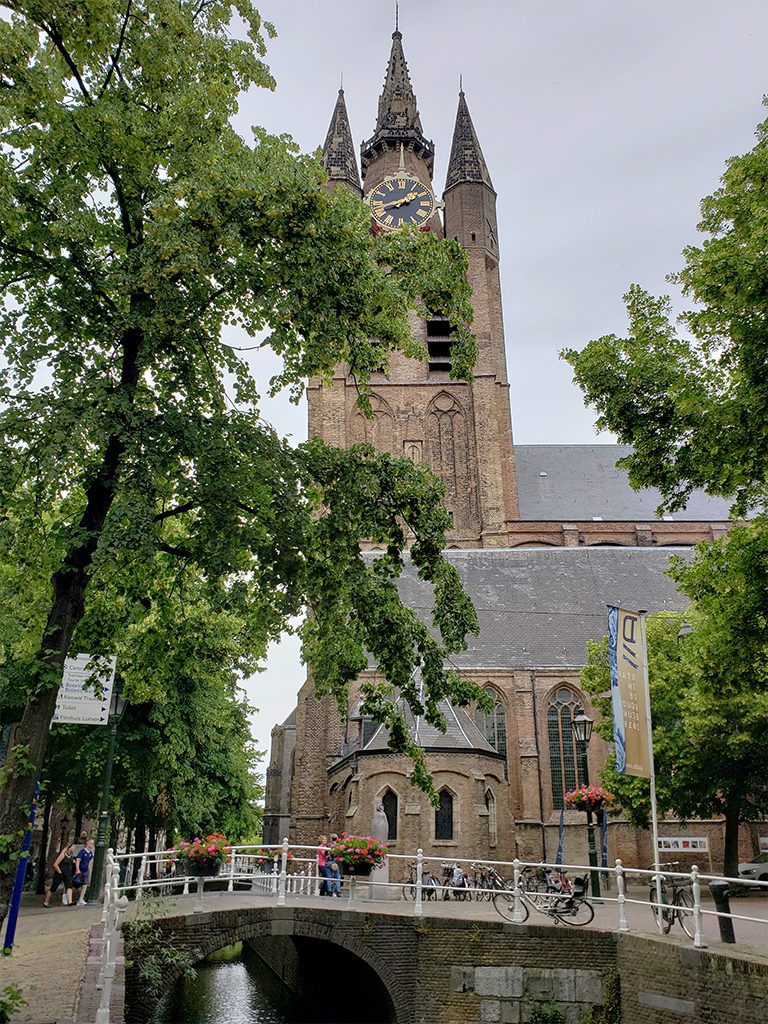
The most distinctive thing about the Oude Kerk is that its tower appears to be dangerously crooked, and it has been this way since the beginning. The tower, partially constructed on top of an infilled canal, began to sink on one side. Instead of starting over the builders attempted to correct the tower as they went. In the end only the turrets at the very top are perfectly straight. Overall the tower leans by about 2 meters (6 feet). It has been deemed “safe” by engineers who continue to monitor it. I find myself siding with the locals who have always been somewhat unconvinced.
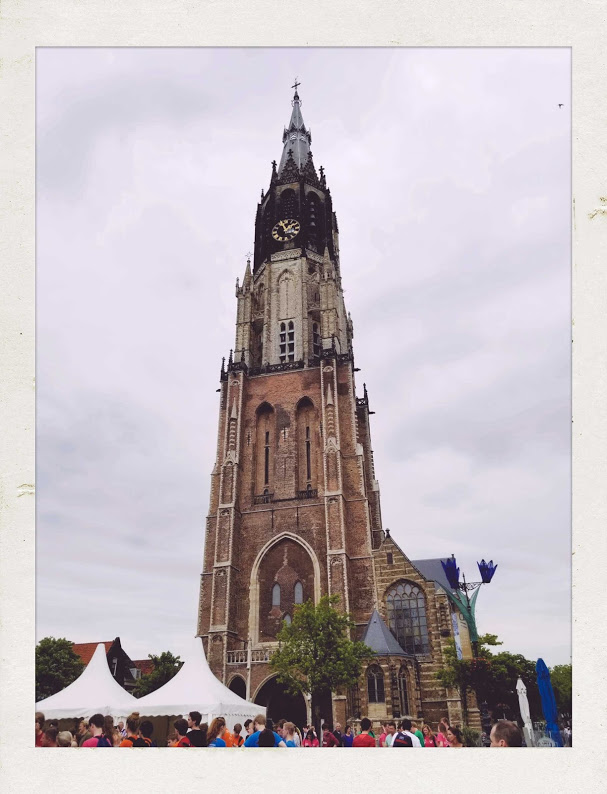
About 10 minutes away on the main Markt square the Nieuwe Kerk stands straight and true, and looms much higher. This tower can be climbed when the weather is clear. We were advised at the ticket counter of the Oude Kerk to head there first as there was a possibility for lightning later in the day. So we did.
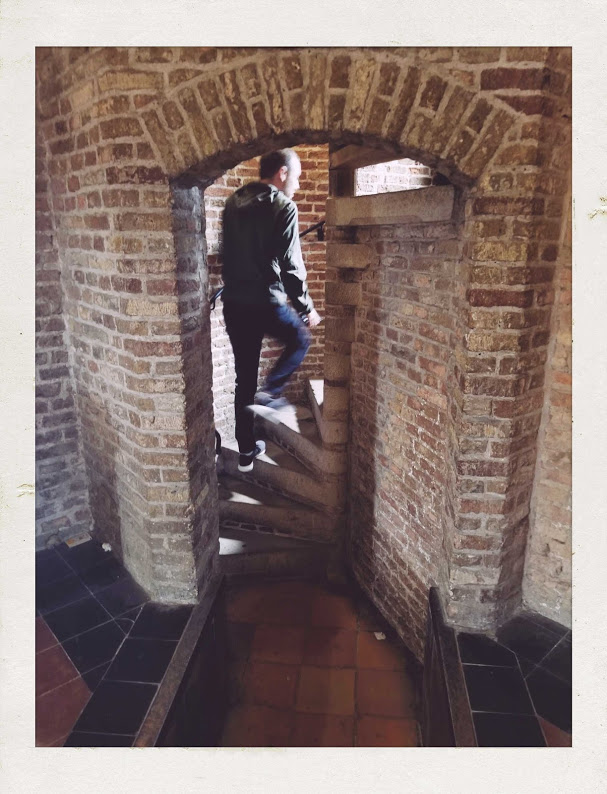
Both churches share the same ticket system, but only the Nieuwe Kerk is equipped with high-tech bar code scanners. Once through the gates, however, things quickly become very old school. After a few dozen rotations of the narrow stone staircase, as we squeezed past others coming in the opposite direction, we realized that it was going to be a fairly exhausting climb. It was worth it, though.
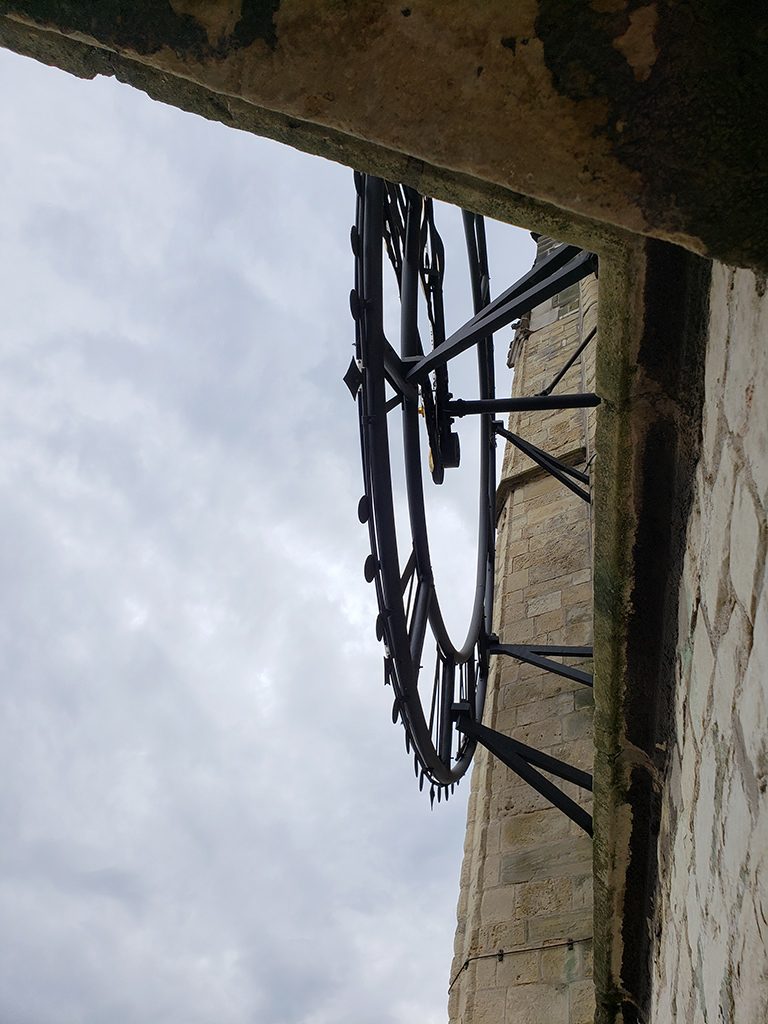
Part way up we popped out a small doorway onto a narrow ledge and found ourselves just below the face of one of the enormous clocks. I took a couple photos before the vertigo set in, then headed back to the staircase.
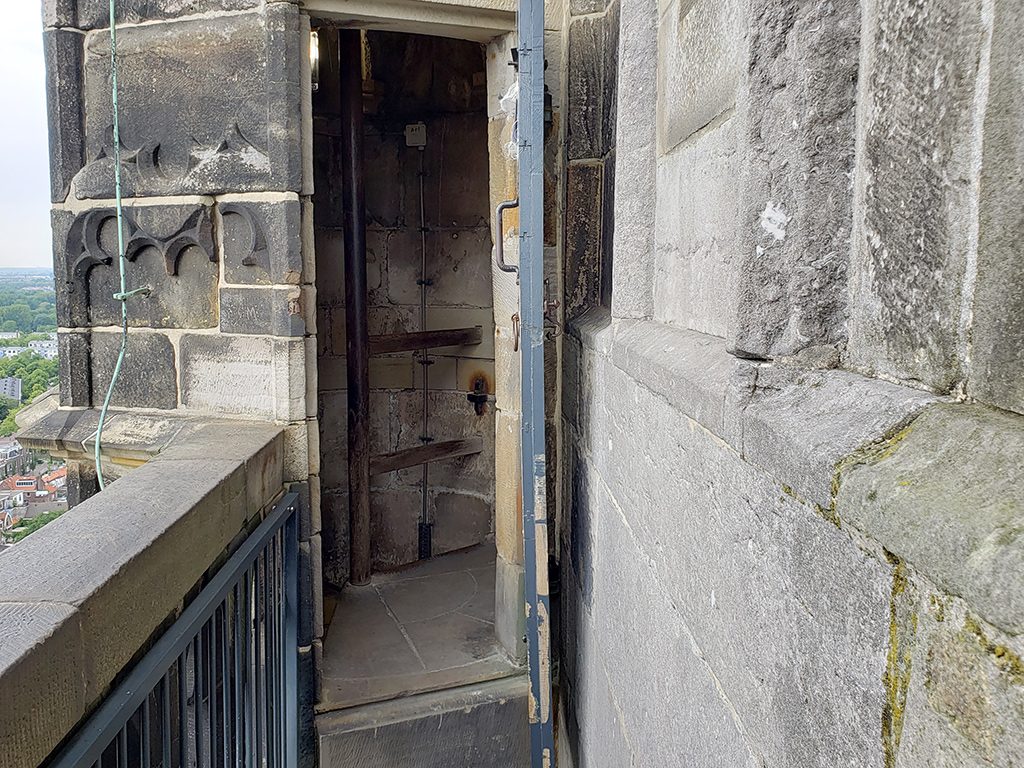
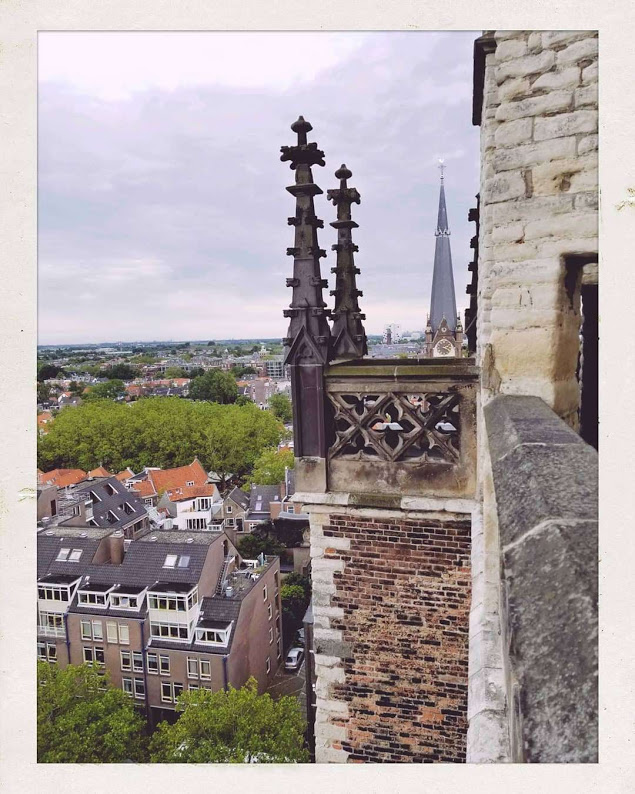
The top platform rewarded us with great views of Delft
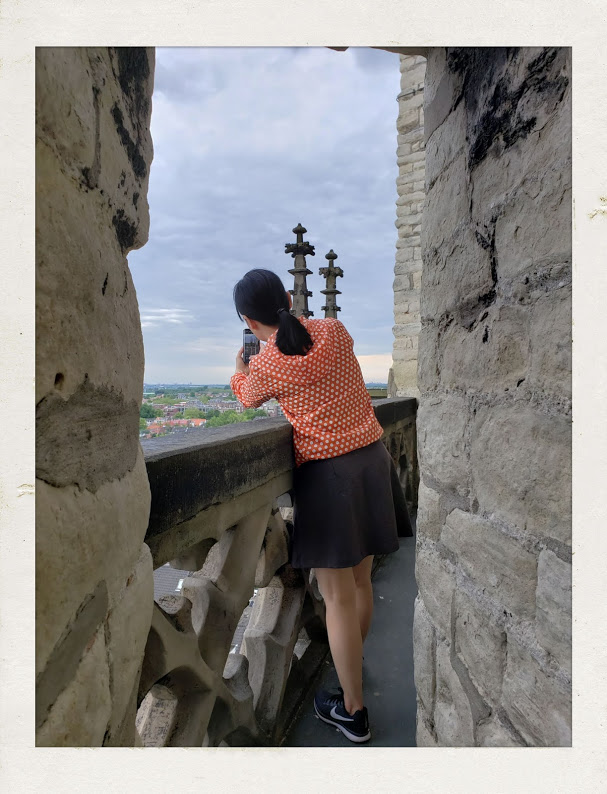
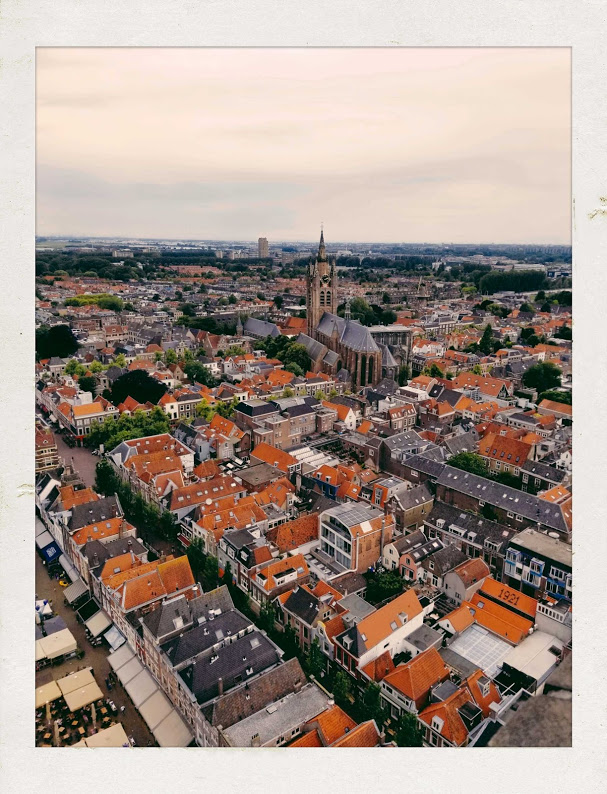
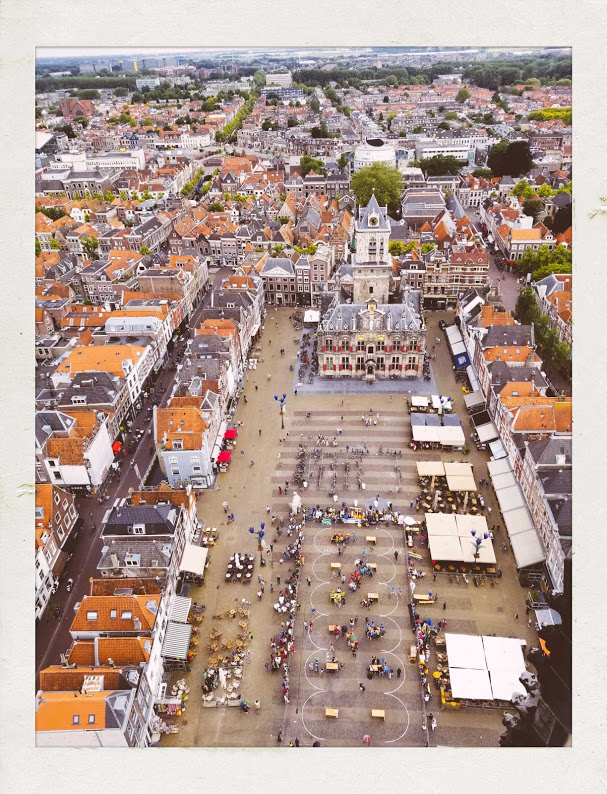
We had a nice view of the Markt square below, where there was a student robot-building competition in progress.
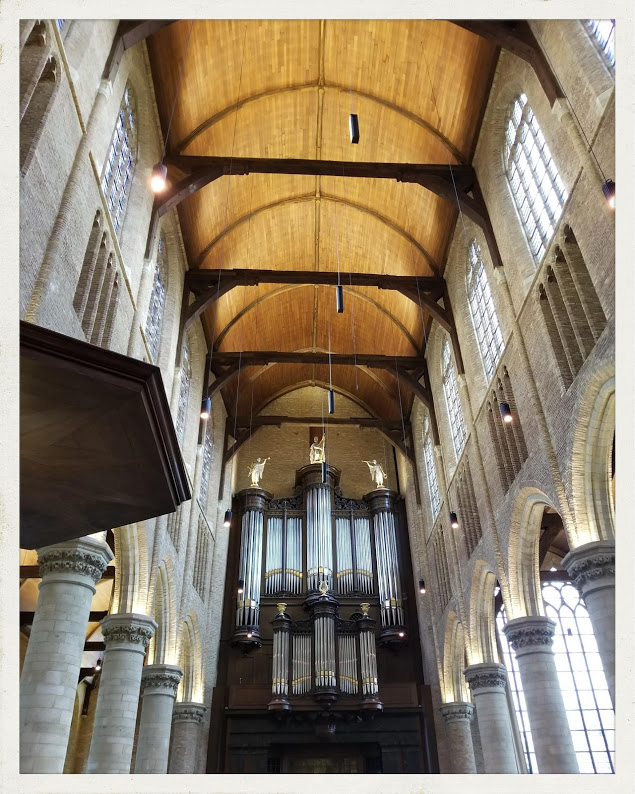
Back at ground level, we toured the main interior of the church. The bright and minimalist church interiors in the Netherlands are partially due to the Beeldenstorms of the 16th century when Protestant iconoclasts stormed into churches and tore down statues and other decorations that they deemed too Catholic.
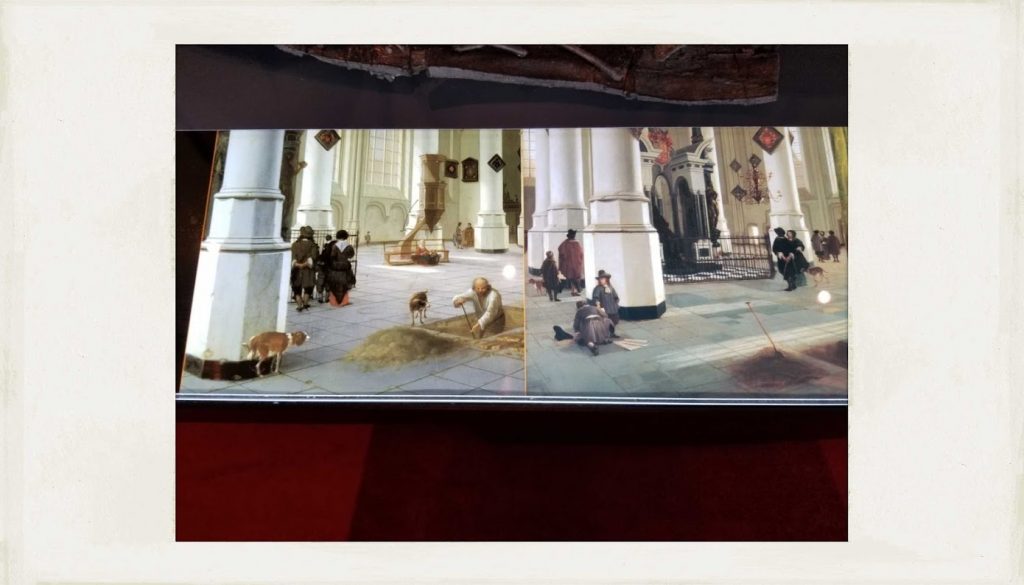
Until 1829 wealthy citizens were permitted to be buried within the church itself, as shown in the illustration above. The smell of the decaying bodies inside gave rise to the term “the stinking rich” and the practice was eventually banned.
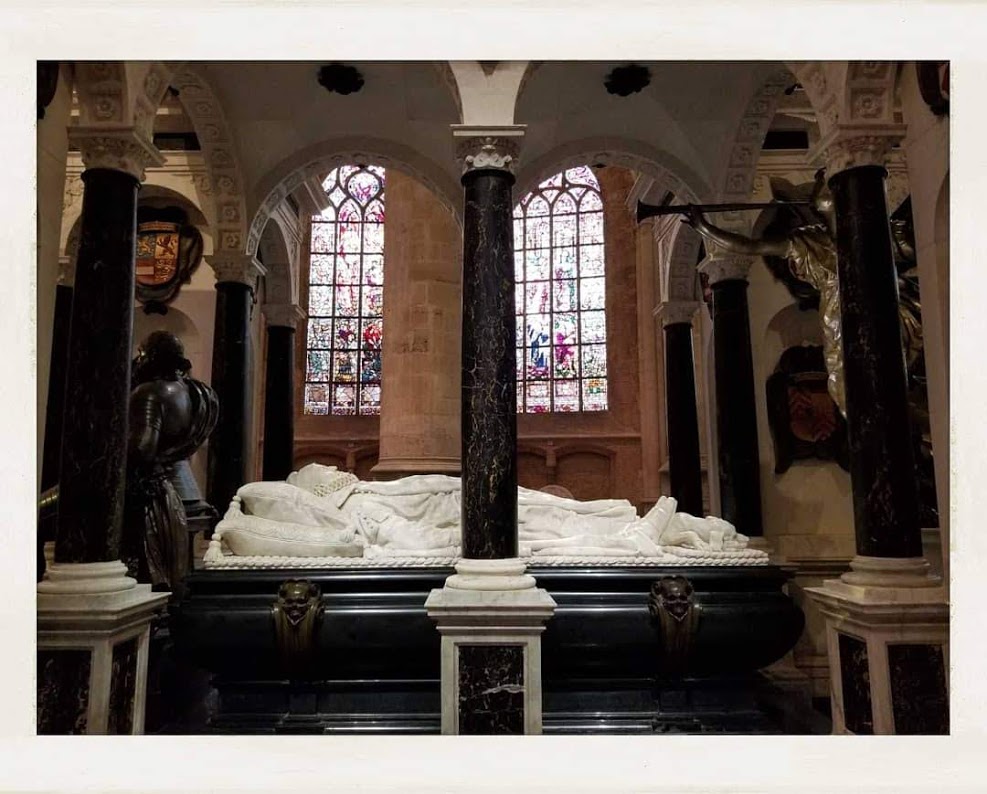
The most famous tomb in the Nieuwe Kerk is that of William of Orange (1533 – 1584) who lead a revolt of the Dutch against Spanish rule in the Eighty Years War, and then became the founding father of the Monarchy of the Netherlands.
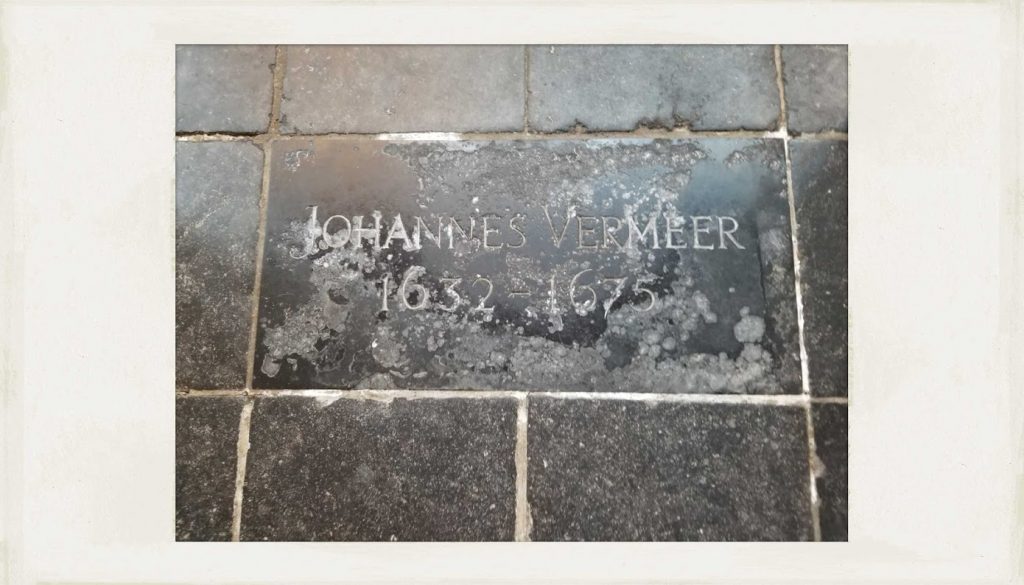
Over in the Oude Kerk the two tombs of note are that of painter Johannes Vermeer (1632 – 1675) and Antonie van Leeuwenhoek (1632 – 1723) the father of the microscope and microbiology we all learned about in science class.
